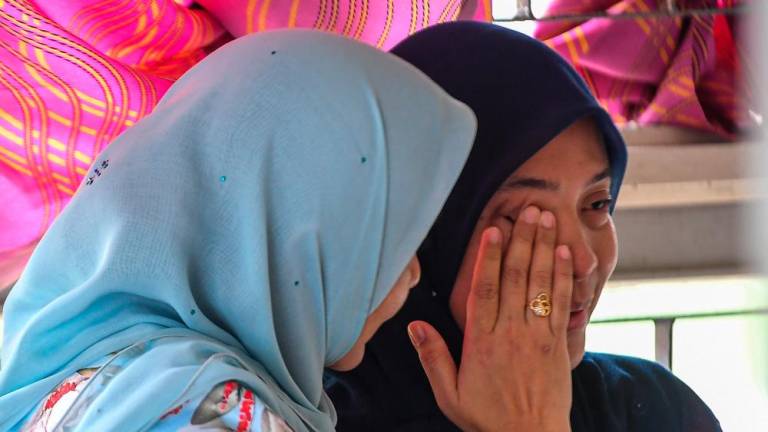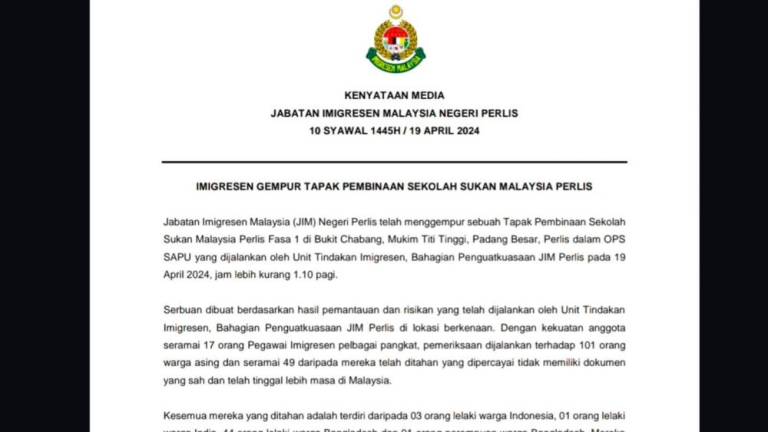WHILE the severe acute respiratory syndrome (SARS) and Covid-2019 (coronavirus) began in China and spread rapidly, the 17-year gap between the outbreak of the former in November 2002 and the latter in late December 2019 has resulted in significant differences between the two pandemics’ global impact.
First is China’s economic heft. If any doubt persists that China is now an economic titan, the coronavirus’ wide-ranging reverberations on commodity prices, spending on luxury goods and global supply chains should erase decisively any lingering uncertainty.
Data compiled by Lee Heng Guie, executive director of private think-tank SERC, show China’s nominal gross domestic product (GDP) totalled US$13.6 trillion in 2018 – eight times larger than the comparable US$1.7 trillion in 2003.
Proportionately, China now accounts for 15.8% of global GDP – 3.7 times larger than its meagre 4.3% global share in 2003. GDP is the total value of goods produced and services provided in a country within one year.
More pertinent, China contributes 40% of global GDP growth, Daniel Moss wrote in Bloomberg. A marked slowdown in China’s economy persisting beyond first quarter (1Q) 2020 could reverberate globally and regionally.
Since China’s accession to the World Trade Organisation on Dec 11, 2001, the communist giant is also a prime player in international trade.
In 2018, China’s global trade amounted to US$4.6 trillion; this was 5.4 times larger than the paltry US$851 billion recorded in 2003. During the same period, its share of global trade more than doubled from 5.5% to 11.7%.
Second, action taken to contain the spread of the coronavirus epidemic by restricting travel could impact oil prices significantly – an outcome that could affect Malaysian government revenue appreciably.
In 2016, China surpassed the US as the world’s largest oil importer. Currently, China consumes 14 million barrels of oil a day – equivalent to the combined needs of France, Germany, Italy, Spain, the UK, Japan and South Korea, a Bloomberg article written by Alfred Cang, Javier Blas and Sharon Cho says.
Analysts have begun reducing their forecast for oil prices this year. Citigroup slashed estimates for first quarter (1Q) Brent oil to US$54 a barrel from US$69 while predicting this global benchmark could tumble to as low as US$47 a barrel – the weakest in two-and-a-half years.
Jeff Currie, global head of commodities research at Goldman Sachs, says the slowdown in China’s industrial activity and shutdown of factories due to the coronavirus outbreak is causing the worst shock to oil demand in a decade. China’s demand for oil could drop from two to three million barrels a day, on par with 2008-2009 (global financial crisis), he added.
Brent could average US$63 a barrel for the full year this year, Currie estimated.
Third, mainland Chinese are big spenders, particularly of high-end luxury goods.
At home and overseas, Chinese shoppers are estimated to have spent €100 billion in 2018 out of €313 billion globally, according to McKinsey & Company. Furthermore, China accounted for more than half of the luxury market’s growth from 2012 to 2018, Pamela N. Danziger wrote in Forbes.
During the SARS outbreak, mainland Chinese accounted for less than 10% of the luxury market. Consultancy Bain & Co estimates Chinese shoppers comprised 35% of global luxury sales. More significantly, Chinese shoppers contributed 90% of last year’s growth in this market, Bain adds.
Fourth, unlike in 2003, social media is now a material purveyor of news, particularly fake news. To stop the global spread of hazardous false information, the World Health Organisation is working with powerful disseminators of information – Facebook, Twitter and Google as well as social media influencers – to “make sure people can find authoritative information” in several languages as well as debunking false news.
Fifth, China is now a pivotal player in global supply chains, particularly in electronic goods like smartphones.
Analysis firm TrendForce predicts 275 million smartphones will be made in the January-March quarter, 12% lower from 310 million in 1Q 2019 while research firm Canalys suggests smartphone sales in China could halve this quarter.
American tech company Apple is particularly vulnerable. Out of its 775 manufacturing and supply locations, 381 are in China, Evercore ISI analyst Amir Daryanani noted.
In the December quarter, Greater China recorded US$13.6 billion of sales or 15% of Apple’s global figure.
Sixth, often overlooked is the dramatically different fatality rate of SARS and the coronavirus.
As of Feb12, coronavirus cases have topped 45,204 – surpassing the 8,100 figure during the 8-month SARS infection. Notably, the coronavirus’ fatality rate is sharply lower at below 2% compared with almost 10% for SARS, David Heymann who oversaw WHO’s response to the outbreak told Bloomberg.
“You have to compare the two in perspective,” Heymann said.
To sum up, while there is cause for concern and caution, panic is unwelcome and unnecessary.
Opinions expressed in this article are the personal views of the writer and should not be attributed to any organisation she is connected with. She can be contacted at siokchoo@thesundaily.com














